
The Enchanting Con Dao Islands: Vietnam's Hidden Paradise
Discover the pristine beauty and rich history of Con Dao Islands, Vietnam's hidden gem, perfect for nature lovers and history enthusiasts alike.
Nestled off the southern coast of Vietnam, the Con Dao Islands are a treasure trove of natural beauty and historical significance. This archipelago, consisting of 16 islands, is renowned for its pristine beaches, crystal-clear waters, and lush tropical forests. The main island, Con Son, is a haven for nature lovers and history buffs alike, offering a unique blend of serene landscapes and poignant past. The islands are part of the Con Dao National Park, which is home to diverse marine life and vibrant coral reefs. Snorkeling and diving enthusiasts will find themselves in an underwater paradise, with opportunities to spot sea turtles, colorful fish, and even dugongs. On land, the islands boast several hiking trails that meander through dense forests and lead to breathtaking viewpoints, where you can take in panoramic vistas of the azure sea and rugged coastline. Con Dao also holds a significant place in Vietnam's history. The islands were once used as a prison during the French colonial era and later during the Vietnam War. Today, visitors can explore the well-preserved Con Dao Prison Museum and learn about the resilience and courage of the Vietnamese people. The haunting yet fascinating history adds a profound dimension to the natural allure of the islands, making Con Dao a deeply enriching destination for all travelers.
Local tips in Con Dao Islands
- Visit between March and September for the best weather and optimal sea conditions for diving and snorkeling.
- Pack insect repellent as the tropical environment can attract mosquitoes, especially in the forested areas.
- Rent a motorbike to explore Con Son Island at your own pace and access remote beaches and trails.
- Respect local wildlife by not disturbing nesting sea turtles, which are a protected species in Con Dao.
- Bring cash, as ATMs are limited and not all establishments accept credit cards.
The Enchanting Con Dao Islands: Vietnam's Hidden Paradise
Nestled off the southern coast of Vietnam, the Con Dao Islands are a treasure trove of natural beauty and historical significance. This archipelago, consisting of 16 islands, is renowned for its pristine beaches, crystal-clear waters, and lush tropical forests. The main island, Con Son, is a haven for nature lovers and history buffs alike, offering a unique blend of serene landscapes and poignant past. The islands are part of the Con Dao National Park, which is home to diverse marine life and vibrant coral reefs. Snorkeling and diving enthusiasts will find themselves in an underwater paradise, with opportunities to spot sea turtles, colorful fish, and even dugongs. On land, the islands boast several hiking trails that meander through dense forests and lead to breathtaking viewpoints, where you can take in panoramic vistas of the azure sea and rugged coastline. Con Dao also holds a significant place in Vietnam's history. The islands were once used as a prison during the French colonial era and later during the Vietnam War. Today, visitors can explore the well-preserved Con Dao Prison Museum and learn about the resilience and courage of the Vietnamese people. The haunting yet fascinating history adds a profound dimension to the natural allure of the islands, making Con Dao a deeply enriching destination for all travelers.
When is the best time to go to Con Dao Islands?
Iconic landmarks you can’t miss
Van Son Pagoda
Explore the serene beauty of Van Son Pagoda, a stunning Buddhist temple in Ba Ria - Vung Tau, Vietnam, where tranquility meets rich cultural heritage.

Côn Đảo Prison
Explore Côn Đảo Prison: A profound war museum reflecting Vietnam's history of resilience and courage amidst its serene natural beauty.

Bảo Tàng Côn Đảo
Discover Vietnam's history at Bảo Tàng Côn Đảo, a captivating museum showcasing the island's heritage and struggles for independence.

Bãi Đầm Trầu
Explore the enchanting Bãi Đầm Trầu, a pristine beach on Con Dao Island, Vietnam, perfect for relaxation, adventure, and cultural exploration.

Island Chief Palace
Explore the Island Chief Palace in Con Dao, Vietnam, and uncover the rich history of this stunning museum and tourist attraction.

Six Senses Con Dao
Discover the tranquility and luxury of Six Senses Con Dao, a premier resort hotel nestled in Vietnam's breathtaking Con Dao archipelago.

Côn Đảo
Discover Côn Đảo, Vietnam's enchanting archipelago, where pristine beaches, rich history, and vibrant culture create an unforgettable escape.

Con Son Island
Explore Con Son Island, a hidden gem in Vietnam offering stunning beaches, lush forests, and rich historical significance for an unforgettable getaway.

Mũi Cá Mập
Discover the breathtaking coastal beauty and vibrant culture of Mũi Cà Mau, a hidden gem in Vietnam's Ba Ria - Vung Tau region.
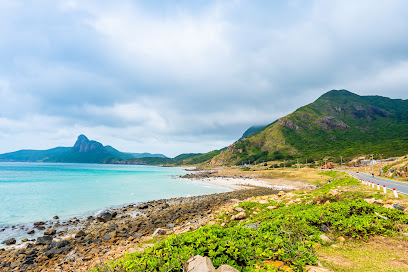
Hang Duong Cemetery
Explore Hang Duong Cemetery in Ba Ria - Vung Tau, a serene memorial honoring Vietnam's brave heroes and rich cultural heritage.

Côn Đảo National Park Tourist Office
Discover the untouched beauty and rich history of Côn Đảo National Park, a tranquil haven of biodiversity and scenic landscapes in Vietnam.

Trại Phú Tường (Chuồng Cọp Pháp)
Discover the historical charm of Trại Phú Tường, a captivating landmark in Ba Ria - Vung Tau, Vietnam, blending rich history with breathtaking landscapes.

Vo Thi Sau Hero Grave
Explore Vo Thi Sau Hero Grave in Con Dao, Vietnam—a serene memorial honoring the resilience and sacrifice of a national hero amidst breathtaking natural beauty.

Holy Cave
Discover the spiritual sanctuary of Holy Cave in Côn Đảo, Vietnam, where nature's beauty meets profound tranquility in a unique pilgrimage experience.
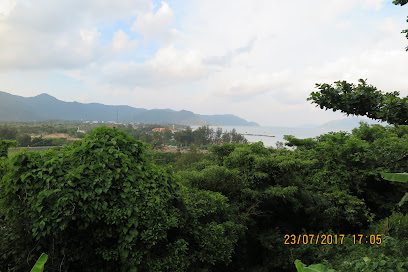
Bãi Suối Nóng
Discover the hidden beauty of Bãi Suối Nóng, a serene beach in Vietnam offering stunning views, relaxation, and adventure in a tranquil setting.

Unmissable attractions to see
Côn Đảo Market
Discover the local culture and delicious flavors at Côn Đảo Market, a vibrant hub of life in the beautiful Côn Đảo archipelago.

Van Son Pagoda
Explore the tranquil Van Son Pagoda in Ba Ria - Vung Tau, Vietnam, a serene Buddhist temple offering breathtaking views and cultural richness.

Côn Đảo Prison
Explore the deep historical significance of Côn Đảo Prison, a poignant war museum on Con Dao Island, Vietnam, and reflect on the resilience of the human spirit.

Bảo Tàng Côn Đảo
Explore the profound history and stunning beauty of Bảo Tàng Côn Đảo, a must-visit museum on Côn Đảo Island, Vietnam, for an enriching cultural experience.

Island Chief Palace
Explore the Island Chief Palace, a historical gem in Con Dao, Vietnam, showcasing rich culture, stunning architecture, and captivating stories from the past.

Chim Chim cape
Discover the breathtaking beauty of Chim Chim Cape, a scenic spot in Ba Ria - Vung Tau, where tranquility meets stunning coastal views.

Mũi Cá Mập
Discover the natural beauty and rich history of Mũi Cả Mập, a breathtaking coastal destination in Côn Đảo, Vietnam, perfect for relaxation and adventure.

Bãi Nhát
Discover the serene beauty of Bãi Nhát, a hidden coastal paradise on Côn Đảo Island, perfect for relaxation and breathtaking sunsets.

Vo Thi Sau Hero Grave
Explore the Vo Thi Sau Hero Grave, a serene memorial to Vietnam's revolutionary hero, nestled in the lush landscapes of Ba Ria - Vung Tau.

Hòn Bảy Cạnh
Experience the tranquil beauty of Hòn Bảy Cạnh in Con Dao, a serene island paradise perfect for relaxation and adventure amidst stunning natural landscapes.

Holy Cave
Explore the serene beauty and spiritual significance of Holy Cave, a hidden gem in Ba Ria - Vung Tau, Vietnam, perfect for pilgrimage and adventure.
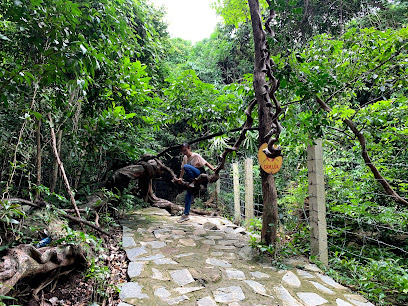
Bãi Suối Nóng
Experience the therapeutic hot springs and tranquil beauty of Bãi Suối Nóng in Vietnam's Ba Ria - Vung Tau, a perfect escape for relaxation.
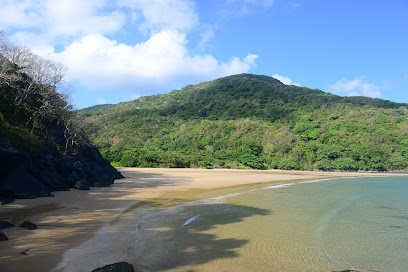
Sở Lò Vôi
Explore the natural beauty and rich history of Sở Lò Vôi, a must-visit tourist attraction in Côn Đảo, Vietnam, perfect for every traveler.

Sở Rẫy
Explore Sở Rẫy, a captivating historical site in Ba Ria - Vung Tau, where Vietnam's rich culture meets stunning coastal landscapes.

Dat Tham Beach
Experience the tranquility and natural beauty of Dat Tham Beach, a hidden gem in Vietnam's coastal paradise, perfect for relaxation and exploration.
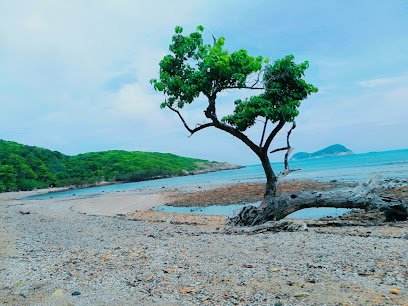
Essential places to dine
Infinity Cafe & Restaurant
Discover delectable Vietnamese cuisine at Infinity Cafe & Restaurant, where breathtaking views meet culinary excellence in Côn Đảo.

Nhà hàng Thu Tâm
Discover authentic Vietnamese seafood at Nhà hàng Thu Tâm in Côn Đảo – where freshness meets tradition in every dish.

An Ơi Cafe & Restaurant
Discover exquisite Vietnamese flavors at An Ơi Cafe & Restaurant, where every meal is a celebration of freshness and tradition in Côn Đảo.

Madame Hà - Vegetarian Cuisine
Discover exquisite vegetarian cuisine at Madame Hà in Côn Đảo – where fresh flavors meet traditional Vietnamese cooking.
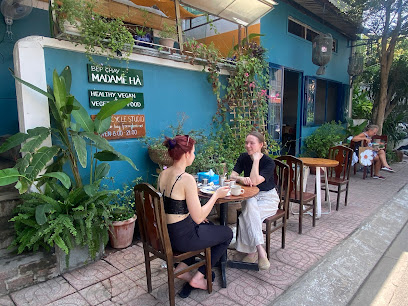
Nhà hàng Thu Ba
Experience authentic Vietnamese seafood delicacies at Nhà Hàng Thu Ba in Côn Đảo's stunning surroundings.

Bar 200 - By The Beach
Experience coastal bliss at Bar 200 - By The Beach, where delicious cuisine meets stunning ocean views in Côn Đảo.

Beach House Restaurant & Cocktails Côn Đảo
Experience culinary excellence at Beach House Restaurant & Cocktails in Côn Đảo – where fusion flavors meet stunning ocean views.

Con Son Seafood restaurant
Discover authentic Vietnamese seafood at Con Son Seafood Restaurant in Côn Đảo - where freshness meets flavor in a stunning coastal setting.

Nhà Hàng Cánh Buồm
Discover authentic Vietnamese cuisine at Nhà Hàng Cánh Buồm in Côn Đảo, where fresh seafood meets breathtaking ocean views.
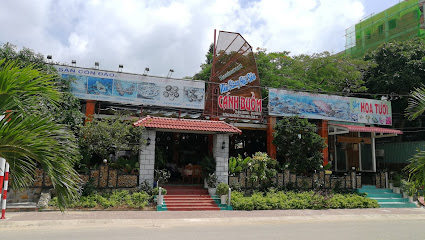
Quán Tri Kỷ
Discover authentic Vietnamese flavors at Quán Tri Kỷ in Côn Đảo—where fresh seafood meets traditional culinary artistry.

ULA Restaurant & Bar Con Dao
Discover the flavors of Vietnam at ULA Restaurant & Bar in Con Dao – where culinary excellence meets breathtaking views.

The Secret Restaurant
Experience authentic Vietnamese cuisine at The Secret Restaurant in Côn Đảo - where every meal is a delightful journey into local flavors.

Nhà hàng Nam Dinh
Savor the authentic flavors of Vietnam at Nhà hàng Nam Dinh in beautiful Côn Đảo - where every dish tells a story.

The Den
Discover exceptional coffee and diverse cuisine at The Den in Côn Đảo - where every bite tells a story.

Julia's Garden - Cafe and Dining
Discover culinary delights at Julia's Garden - Cafe and Dining in Côn Đảo, where every meal is a celebration of Vietnamese flavors amidst stunning scenery.

Markets, malls and hidden boutiques
Côn Đảo Market
Explore Côn Đảo Market, where vibrant local culture meets delicious street food and unique handicrafts in a lively atmosphere.

Takai Mart Côn Đảo
Discover the vibrant local culture at Takai Mart Côn Đảo, the essential supermarket for both tourists and locals alike, offering fresh produce and unique local products.

Tạp hóa Lan Anh
Discover Tạp hóa Lan Anh in Côn Đảo, your local grocery store for essential supplies and delightful Vietnamese snacks.

Côn Đảo Gift
Explore Côn Đảo Gift for unique souvenirs and local treasures that embody the spirit of Côn Đảo, Vietnam.

Siêu thị đặc sản,quà lưu niệm côn đảo Hương Biển
Explore Hương Biển Specialty Supermarket in Côn Đảo for a unique shopping experience with local delicacies and memorable souvenirs.

BOO Cosmetic Store - Skincare & Perfume Côn Đảo
Explore the best of Vietnamese beauty at BOO Cosmetic Store, Côn Đảo's premier destination for skincare and perfumes.

Hin Beautytips - Mỹ Phẩm , Phụ Kiện , Quần Áo , Nước Hoa Côn Đảo - Mi Pham Con Dao - Hin Cosmetic
Discover the essence of beauty and style at Hin Beautytips, your go-to cosmetics and fashion stop in beautiful Côn Đảo.

Đồ Cúng Vạn Hạnh
Discover the spiritual essence of Côn Đảo at Đồ Cúng Vạn Hạnh, your destination for authentic religious goods and cultural treasures.
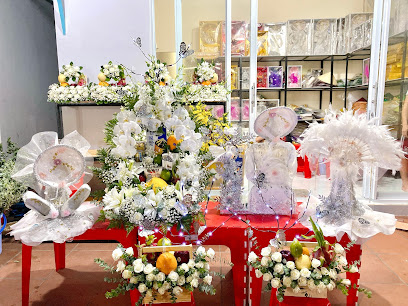
Đồ lễ Thương Nguyễn Côn Đảo
Discover the spiritual essence of Vietnam at Đồ lễ Thương Nguyễn, a unique religious goods store in Côn Đảo offering a rich cultural experience.

Đồ Cúng Cát Tường - Đồng Hành Tâm Linh
Discover the beauty of Côn Đảo at Đồ Cúng Cát Tường, a florist offering exquisite arrangements and a taste of local culture.

Đồ Lễ Phương Nam
Explore Đồ Lễ Phương Nam for unique handicrafts and authentic souvenirs that celebrate the culture of Côn Đảo, Vietnam.

Mocoda Shop
Explore Côn Đảo with ease at Mocoda Shop, your go-to convenience store for snacks and local products in Vietnam's beautiful island paradise.

Hani Bakery 2
Experience the authentic flavors of Côn Đảo at Hani Bakery 2, where exquisite pastries meet charming local gifts.

Đồ Cúng Côn Đảo Như Ý 2
Explore Đồ Cúng Côn Đảo Như Ý 2 for traditional ceremonial offerings and immerse yourself in the rich cultural heritage of Côn Đảo, Vietnam.

Đồ Cúng Phúc Lộc
Discover the cultural treasures of Đồ Cúng Phúc Lộc, a unique store in Côn Đảo showcasing authentic Vietnamese traditions and handcrafted souvenirs.
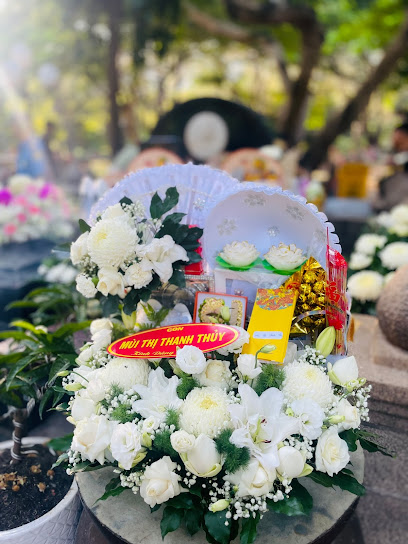
Essential bars & hidden hideouts
Infinity Cafe & Restaurant
Discover culinary delights at Infinity Cafe & Restaurant in Côn Đảo, where stunning views meet exquisite flavors for the ultimate dining experience.

An Ơi Cafe & Restaurant
Savor authentic Vietnamese flavors at An Ơi Cafe & Restaurant in Côn Đảo, where culinary artistry meets local tradition.

Bar 200 - By The Beach
Experience the perfect blend of beach vibes and culinary delights at Bar 200 in Côn Đảo, a must-visit destination for every traveler.

Beach House Restaurant & Cocktails Côn Đảo
Discover the exquisite flavors of Vietnam at Beach House Restaurant & Cocktails in Côn Đảo, where ocean views meet culinary artistry.

Phiên Khúc coffee and food
Discover the delightful fusion of local flavors and modern cuisine at Phiên Khúc Coffee and Food in Côn Đảo, Vietnam.

ULA Restaurant & Bar Con Dao
Discover the flavors of Con Dao at ULA Restaurant & Bar, where local ingredients meet international cuisine in a stunning tropical setting.

The Secret Restaurant
Discover a hidden culinary treasure in Côn Đảo, where authentic Vietnamese flavors and stunning surroundings create an unforgettable dining experience.

Yin Yang
Discover the exquisite flavors of Asian cuisine at Yin Yang, a culinary haven in Con Dao, Vietnam, blending tradition and innovation in every dish.

Hide & Find Bar Côn Đảo
Experience the vibrant nightlife of Côn Đảo at Hide & Find Bar, where exquisite cocktails meet Vietnamese culture in a cozy setting.

On Cloud Nine Cocktail&Bar
Experience the vibrant atmosphere and exquisite cocktails at On Cloud Nine Cocktail Bar, a tropical paradise on Vietnam's stunning Côn Đảo Islands.

Sunset Lounge
Experience the breathtaking views and exquisite flavors at Sunset Lounge, Côn Đảo's premier dining destination.

LoCo Lodge & Pub
Discover the vibrant atmosphere of LoCo Lodge & Pub, a perfect blend of delicious food, craft drinks, and cozy island charm on Côn Đảo.

Karaoke Tuấn Ninh 1
Experience the joy of singing at Karaoke Tuấn Ninh 1, a lively karaoke bar in Côn Đảo, Vietnam, where fun and delicious food meet music.

Karaoke Hải Sơn
Experience the joy of singing at Karaoke Hải Sơn, a lively karaoke bar in Côn Đảo, Vietnam, where music meets fun in a vibrant atmosphere.

KARAOKE 4YOU
Experience the vibrant nightlife at Karaoke 4You, Côn Đảo's favorite bar for karaoke and socializing with locals and travelers alike.

Local Phrases about Con Dao Islands
-
- HelloChào bạn
[Chow ban] - GoodbyeTạm biệt
[Tam byet] - YesCó
[Koh] - NoKhông
[Khom] - Please/You're welcomeLàm ơn
[Lam uhn] - Thank youCảm ơn
[Kam uhn] - Excuse me/SorryXin lỗi
[Sihn loy] - How are you?Bạn khỏe không?
[Ban kwe khom?] - Fine. And you?Khỏe. Còn bạn?
[Kwe. Kohn ban?] - Do you speak English?Anh/Chị có nói tiếng Anh không?
[Ahn/Chi koh noy tyeng Anh khom?] - I don't understandTôi không hiểu
[Toy khom hye-u]
- HelloChào bạn
-
- I'd like to see the menu, pleaseCho xem thực đơn, vui lòng
[Cho sem took dun, vooi long] - I don't eat meatTôi không ăn thịt
[Toy khom an tit] - Cheers!Chúc sức khỏe!
[Chook sook kwe] - I would like to pay, pleaseTôi muốn thanh toán, vui lòng
[Toy moon thanh toan, vooi long]
- I'd like to see the menu, pleaseCho xem thực đơn, vui lòng
-
- Help!Cứu!
[Kew] - Go away!Đi ra!
[De ra] - Call the Police!Gọi Cảnh sát!
[Goi Kam sat] - Call a doctor!Gọi bác sĩ!
[Goi bahk see] - I'm lostTôi lạc đường
[Toy lac doong] - I'm illTôi bị ốm
[Toy bee om]
- Help!Cứu!
-
- I'd like to buy...Tôi muốn mua...
[Toy moon mwa] - I'm just lookingTôi chỉ xem thôi
[Toy chi sem toy] - How much is it?Bao nhiêu tiền?
[Bao nyew tyen?] - That's too expensiveQuá đắt
[Kwah dat] - Can you lower the price?Có thể giảm giá được không?
[Koh te zam zah duoc khom?]
- I'd like to buy...Tôi muốn mua...
-
- What time is it?Bây giờ là mấy giờ?
[Bay zoi la my zoi?] - It's one o'clockMột giờ rồi
[Mot zoi roy] - Half past (10)Mười rưỡi
[Moo-ee roo-ee] - MorningBuổi sáng
[Boo-ee sang] - AfternoonBuổi chiều
[Boo-ee chyew] - EveningBuổi tối
[Boo-ee toy] - YesterdayHôm qua
[Hom kwah] - TodayHôm nay
[Hom nay] - TomorrowNgày mai
[N-yai my] - 1Một
[Mot] - 2Hai
[Hai] - 3Ba
[Ba] - 4Bốn
[Boon] - 5Năm
[Nam] - 6Sáu
[Sow] - 7Bảy
[Bay] - 8Tám
[Tahm] - 9Chín
[Cheen] - 10Mười
[Moo-ee]
- What time is it?Bây giờ là mấy giờ?
-
- Where's a/the...?Có...ở đâu?
[Koh...uh dow?] - What's the address?Địa chỉ ở đâu?
[Dee-ah chee uh dow?] - Can you show me (on the map)?Bạn có thể chỉ cho tôi (trên bản đồ) không?
[Ban koh te chee cho toy (tr-un bahn do) khom?] - When's the next (bus)?Khi nào là chuyến xe buýt tiếp theo?
[Kee now la chuyen se booyt tyep theo?] - A ticket (to ....)Một vé (đi ....)
[Mot vay (di ....)]
- Where's a/the...?Có...ở đâu?
History of Con Dao Islands
-
The Con Dao Islands, located off the southeastern coast of Vietnam, have a history that dates back to ancient times. The islands were initially inhabited by the Malay people, who were later joined by Vietnamese settlers. These early communities engaged in fishing and small-scale agriculture, establishing the first rudimentary settlements on the archipelago.
-
The Con Dao Islands gained notoriety during the French colonial era when they were used as a penal colony. In 1861, the French established the Con Dao Prison, also known as Poulo Condore, to detain political prisoners and revolutionaries. Over the years, the prison complex expanded to include several facilities, where inmates endured harsh conditions and brutal treatments. This period left an indelible mark on the island's history, with many Vietnamese nationalists and freedom fighters imprisoned there.
-
During the Vietnam War, the Con Dao Islands once again became a site of imprisonment and suffering. The U.S. and South Vietnamese governments operated the infamous 'Tiger Cages' on the island, where political prisoners were held in inhumane conditions. The cages were small, cramped cells that exposed prisoners to extreme heat and limited ventilation. The discovery of these cages in 1970 by American Congressmen raised international awareness about the human rights abuses occurring on Con Dao.
-
Following the end of the Vietnam War in 1975, the Con Dao Islands transitioned from a place of suffering to one of remembrance and restoration. The Vietnamese government took steps to preserve the historic prison sites and honor the memory of those who were imprisoned there. Today, the Con Dao Museum and various memorials serve as poignant reminders of the island's turbulent past and the resilience of the Vietnamese people.
-
Beyond its historical significance, the Con Dao Islands are renowned for their stunning natural beauty and rich biodiversity. The archipelago is part of the Con Dao National Park, which protects diverse marine and terrestrial ecosystems. Visitors can explore pristine beaches, lush forests, and vibrant coral reefs teeming with marine life. The islands are also a nesting site for sea turtles, and conservation efforts are in place to protect these endangered creatures.
-
The Con Dao Islands are home to a small but vibrant local community. The culture of the islands is a blend of traditional Vietnamese customs and influences from the various groups that have settled there over the centuries. Local festivals, cuisine, and daily life offer a glimpse into the unique cultural heritage of Con Dao. Visitors can experience the warm hospitality of the islanders and immerse themselves in the tranquil pace of life on the islands.
Con Dao Islands Essentials
-
Con Dao Islands are located off the southeast coast of Vietnam. The most common way to get there is by taking a flight from Ho Chi Minh City (Tan Son Nhat International Airport) to Con Dao Airport (Co Ong Airport). The flight takes about 45 minutes. Alternatively, high-speed ferries operate from Vung Tau and Soc Trang to Con Dao, with the journey taking around 3-4 hours.
-
Once on the islands, you can get around by renting a motorbike, bicycle, or car. Motorbikes are the most popular and convenient option for exploring the islands. Taxis are also available, though they can be more expensive. Cycling is a great way to enjoy the scenic beauty at a slower pace. Always check the condition of the vehicle before renting.
-
The official currency is the Vietnamese Dong (VND). Credit cards are accepted in some hotels and larger establishments, but it's advisable to carry cash, especially for smaller businesses, local markets, and street vendors. ATMs are available on the main island, but it's wise to withdraw sufficient cash before traveling to ensure you have enough funds.
-
Con Dao Islands are generally safe for tourists. However, it is always best to take standard precautions. Avoid isolated areas at night and keep an eye on your belongings in crowded places. Petty theft can occur, so be cautious with your valuables. There are no specific high-crime areas targeting tourists on the islands.
-
In case of emergency, you can dial 113 for police, 114 for fire, and 115 for medical emergencies. There is a small hospital on the main island for medical issues. Having travel insurance that covers medical emergencies is recommended. Pharmacies are available for minor health issues and over-the-counter medications.
-
Fashion: Do dress modestly, especially when visiting religious sites. Avoid wearing revealing clothing. Religion: Do respect local customs and traditions. Always remove your shoes and cover your shoulders when entering temples and pagodas. Public Transport: Do be respectful and patient. Don't eat or drink on public transport. Greetings: Do greet people with a smile and a slight bow of the head. A handshake is also acceptable. Eating & Drinking: Do try local seafood and delicacies. Always receive food with both hands as a sign of respect. Don’t refuse hospitality, as it is considered impolite.
-
To experience Con Dao Islands like a local, visit the local markets early in the morning for fresh produce and seafood. Engage with the locals; they are friendly and often willing to share stories about the islands' history and culture. Don’t miss a visit to Con Dao National Park for hiking and wildlife spotting. For a unique experience, take a boat tour around the surrounding smaller islands for snorkeling and diving.
Trending Landmarks in Con Dao Islands
Nearby Cities to Con Dao Islands
-
Things To Do in Vung Tau
-
Things To Do in Ho Chi Minh City
-
Things To Do in Phan Thiet
-
Things To Do in Mui Ne
-
Things To Do in Kep
-
Things To Do in Phu Quoc
-
Things To Do in Kampot
-
Things To Do in Phnom Penh
-
Things To Do in Sihanoukville
-
Things To Do in Dalat
-
Things To Do in Kratie
-
Things To Do in Koh Rong
-
Things To Do in Buon Ma Thuot
-
Things To Do in Nha Trang
-
Things To Do in Koh Kong











